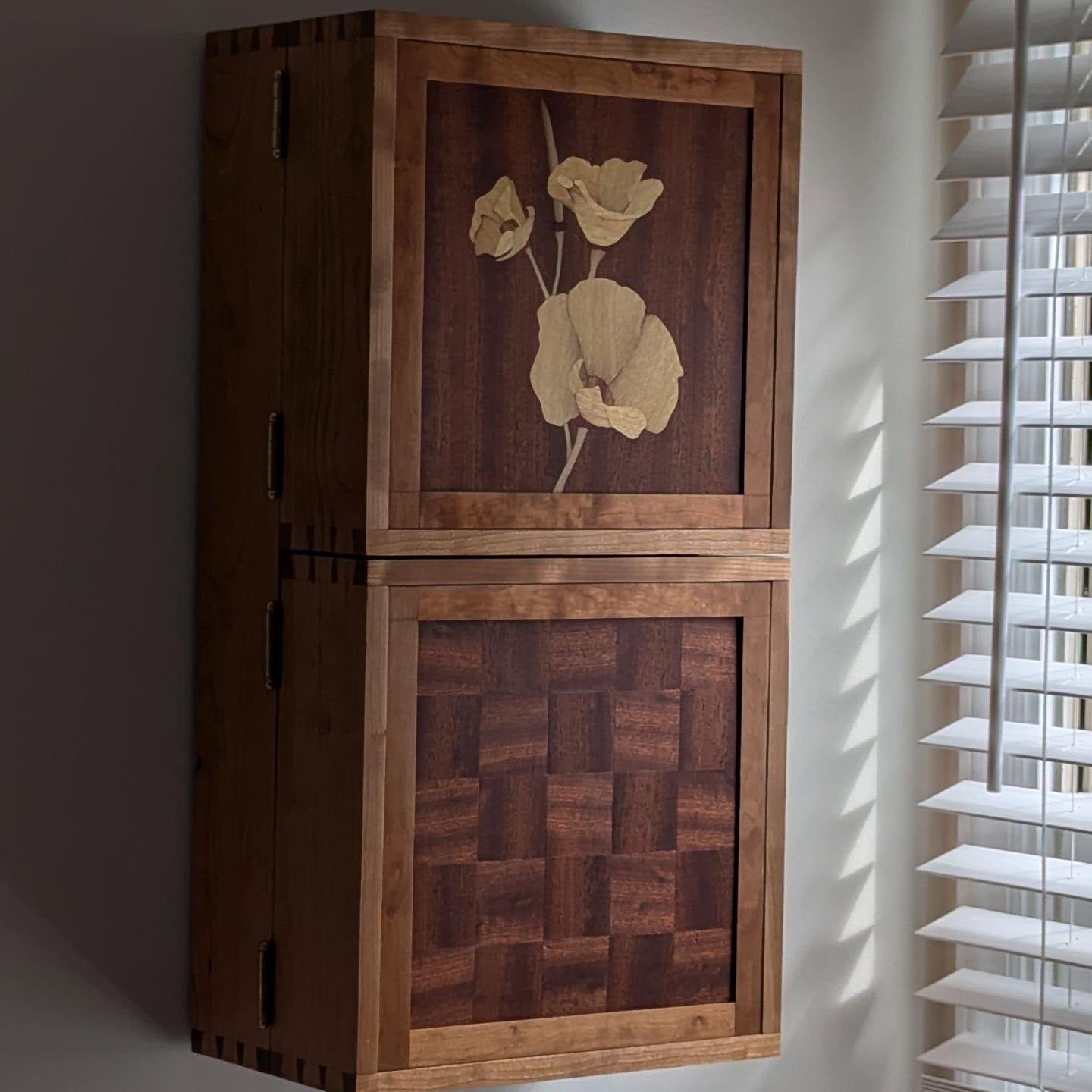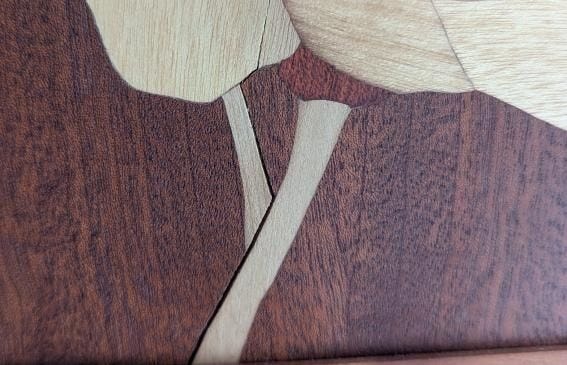A while back, my friend Charlie contacted me to see if I’d be willing to make a marquetry panel for a project he was working on.
After a little back and forth, we decided on a design and I got to work. I also prepared a nice stack of sapele veneer squares for him to create his own checkerboard pattern panel. Both panels turned out great, and Charlie turned them into a lovely wall cabinet for his partner.
When these panels were made, both Charlie and I were working out of our respective shops in suburban Washington, D.C. Charlie has since relocated down south and has this piece hung in his new home. You can probably see where this is headed.
Today I got a message from Charlie. Things have….changed. What used to be nice, tight, seamless joints are now an ugly mess of glue lines.
And my beautiful poppy decided to creep away from it’s field.
One of the big advantages of veneer is that it doesn’t respond to changes in humidity and temperature the way that solid wood does. That’s why you can do something like a checkerboard pattern or a marquetry panel with grain pointing in all directions and not worry about gaps opening up over time. That is, of course, unless they do.
All of the veneers used here were certainly thin enough to alleviate concerns about wood movement (generally I stay at 1/16” or thinner), were applied to high quality baltic birch plywood substrates, and both had balance sheets applied to them (the balance sheets were also even sapele!). So why did this happen?
The real answer to this is, at it’s core, “fuck if I know,” but there’s a point here that I think is worth highlighting.
A couple of years ago I was feeling rather bombastic in my woodworking — I wasn’t used to having people compliment my work, and all of a sudden I had started posting on Instagram where strangers would give me validation on a daily basis.
One day I went online and started discussing a piece I had seen that experienced failure in some form. I don’t remember exactly what I said, but it was something regarding the properties of wood that I presented as an absolute, hard and fast rule.
Almost instantly, my friend Shane started peppering me with historical examples of pieces that had broken the same exact rule, but had experienced no failure. I assure you that Shane did not do this to make me feel bad or make himself feel good — he’s not that type of person. He did it (I think) to teach me two lessons, both of which have stuck with me.
The first is to remain humble. This is certainly a goal of mine in life, but like anyone I stray from time to time. I’m grateful to have friends like Shane to keep me on the right path.
The more important lesson, though, is that wood is really fucking weird. It will have a set of properties that you think are universal and then just totally not exhibit them in certain instances. Shane likes to send me examples of stuff like that all the time to really drive the point home (and presumably because I really enjoy seeing them!), and almost every single time I’m surprised.
So what should we do about it? I have some deeper thoughts on this that I’ll discuss in a later post, but since Shane so brutally owned me, I’ve done two things:
Realized that even though I work with wood pretty much every single day and spend so much time thinking about it, I’m still very uneducated. I started reading a lot more. Chances are, you know a hell of a lot less about wood than you think you do. If you don’t own this book, buy it right now.
Never assume anything about wood. Prepare for the most likely scenarios, but be willing to accept the unexpected.
_______________________________________________________________________
NOTE: SHAMELESS SELF PROMOTION, BUT MY BOOK, “Complete Starter Guide to Making Wooden Boxes” IS CURRENTLY AVAILABLE FOR PREORDER AND WILL BE RELEASED MAY 6, 2025 BY FOX CHAPEL PUBLISHING!







Yes that’s a very good book to have.
Curious, what glue did you use to attach the panel to the substrate?